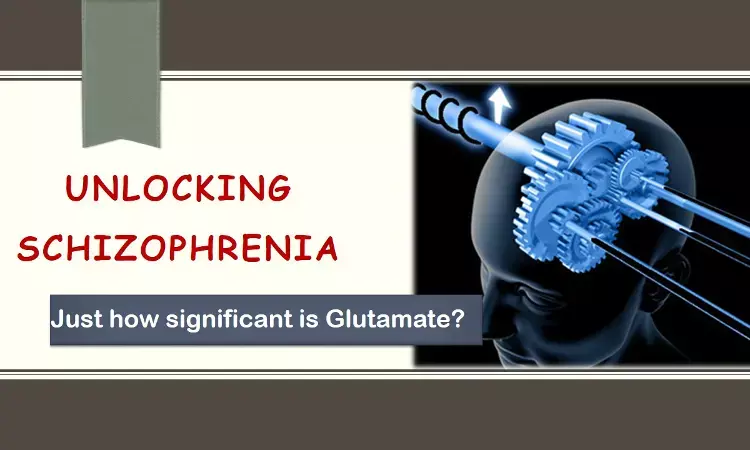- Home
- Medical news & Guidelines
- Anesthesiology
- Cardiology and CTVS
- Critical Care
- Dentistry
- Dermatology
- Diabetes and Endocrinology
- ENT
- Gastroenterology
- Medicine
- Nephrology
- Neurology
- Obstretics-Gynaecology
- Oncology
- Ophthalmology
- Orthopaedics
- Pediatrics-Neonatology
- Psychiatry
- Pulmonology
- Radiology
- Surgery
- Urology
- Laboratory Medicine
- Diet
- Nursing
- Paramedical
- Physiotherapy
- Health news
- Fact Check
- Bone Health Fact Check
- Brain Health Fact Check
- Cancer Related Fact Check
- Child Care Fact Check
- Dental and oral health fact check
- Diabetes and metabolic health fact check
- Diet and Nutrition Fact Check
- Eye and ENT Care Fact Check
- Fitness fact check
- Gut health fact check
- Heart health fact check
- Kidney health fact check
- Medical education fact check
- Men's health fact check
- Respiratory fact check
- Skin and hair care fact check
- Vaccine and Immunization fact check
- Women's health fact check
- AYUSH
- State News
- Andaman and Nicobar Islands
- Andhra Pradesh
- Arunachal Pradesh
- Assam
- Bihar
- Chandigarh
- Chattisgarh
- Dadra and Nagar Haveli
- Daman and Diu
- Delhi
- Goa
- Gujarat
- Haryana
- Himachal Pradesh
- Jammu & Kashmir
- Jharkhand
- Karnataka
- Kerala
- Ladakh
- Lakshadweep
- Madhya Pradesh
- Maharashtra
- Manipur
- Meghalaya
- Mizoram
- Nagaland
- Odisha
- Puducherry
- Punjab
- Rajasthan
- Sikkim
- Tamil Nadu
- Telangana
- Tripura
- Uttar Pradesh
- Uttrakhand
- West Bengal
- Medical Education
- Industry
Master transmitter Glutamate: JAMA study hints at new therapeutic targets for schizophrenia

Glutamatergic dysfunction is implicated in the pathophysiology of schizophrenia, but the nature of this dysfunction may change over the course of illness. Aspects of glutamatergic dysfunction can be investigated in vivo using proton magnetic resonance spectroscopy (1HMRS) which measures the total amount of intracellular and extracellular glutamate (Glu). Kate Merritt et al have published a mega-analysis in JAMA Psychiatry which highlights that lower brain glutamate levels may be associated with antipsychotic exposure while higher glutamate levels may serve as a biomarker of illness severity in patients with schizophrenia. This mega-analysis answers various conflicting results from previous study and suggests that glutamate may be a potential biomarker of schizophrenia severity.
Glutamate is known as Master neurotransmitter (NT) and also the most excitatory NT found in the body. Various studies have been done explaining its role in patho-physiology of schizophrenia. Available evidence till now suggests:
1. Both high and low levels seen in schizophrenia in different studies using 1H-MRS; no universal consensus till now
2. Apparent rise in acute psychosis and fall in chronic states.
3. An age-related decrease in medial frontal cortex (MFC) Glu level in both patients and healthy volunteers.
But none of these findings could be replicated by any large study. There is also a lack of consensus about whether brain glutamatergic metabolite levels are associated with symptom severity and global functioning.
The objective of this megananalysis was to assess the associations of age, symptom severity, level of functioning, and antipsychotic treatment with brain glutamatergic metabolites. Clinical and demographic data included positive, negative, general, and total subscores of the Positive and Negative Syndrome Scale (PANSS), Global Assessment of Functioning (GAF) scores, Clinical Global Impression (CGI) scores, age, duration of illness, antipsychotic medication dose, and duration of treatment.
All methods and results were reported following the Preferred Reporting Items for Systematic Reviews and Meta-analyses (PRISMA) Brain metabolite data were categorized into (1) the MFC, including the anterior cingulate cortex and (2) medial temporal lobe (MTL), including the hippocampus.
A total sample size of 1251 patients with schizophrenia and 1197 healthy volunteers were included in the analyses.
The main findings were:
1. Negative associations of glutamatergic metabolite levels in the MFC with age in both patients with schizophrenia and healthy individuals and with the dose of antipsychotic medication in patients.
2. Higher MFC Glu to Cr ratios were associated with more severe total and positive symptoms and with a lower level of overall functioning.
3. In the MTL, elevated Glx to Cr ratios were associated with more severe total and negative symptoms and with worse CGI scores.
4. In patients, MFC Glu levels were lower than in healthy volunteers irrespective of age, and there was a nonsignificant trend for lower Cr levels in patients.
5. In the MFC, Cr levels, a measure commonly thought to be independent of age, increased with age in both patients and healthy volunteers.
Overall, these results indicate that higher Glu levels may be associated with greater illness severity but that Glu levels may be reduced through effective antipsychotic treatment to below those observed in healthy volunteers.
These findings have important implications for MRS studies in schizophrenia. They highlight the value of matching or adjusting for age, prioritizing CSF-corrected measures over Cr-scaled metabolite levels, and considering antipsychotic dose as an explanatory factor when comparing Glu levels between patients and healthy volunteers.
The finding of elevated Glu levels in patients with more severe symptoms provides further support for the use of glutamatergic measures as a potential biomarker of illness severity, alongside other measures, and the development of novel treatments that target brain glutamatergic function.
Source: JAMA Psychiatry: doi:10.1001/jamapsychiatry.2021.0380
M.B.B.S, M.D. Psychiatry
M.B.B.S, M.D. Psychiatry (Teerthanker Mahavir University, U.P.) Currently working as Senior Resident in Department of Psychiatry, Institute of Human Behaviour and Allied Sciences (IHBAS) Dilshad Garden, New Delhi. Actively involved in various research activities of the department.
Dr Kamal Kant Kohli-MBBS, DTCD- a chest specialist with more than 30 years of practice and a flair for writing clinical articles, Dr Kamal Kant Kohli joined Medical Dialogues as a Chief Editor of Medical News. Besides writing articles, as an editor, he proofreads and verifies all the medical content published on Medical Dialogues including those coming from journals, studies,medical conferences,guidelines etc. Email: drkohli@medicaldialogues.in. Contact no. 011-43720751


